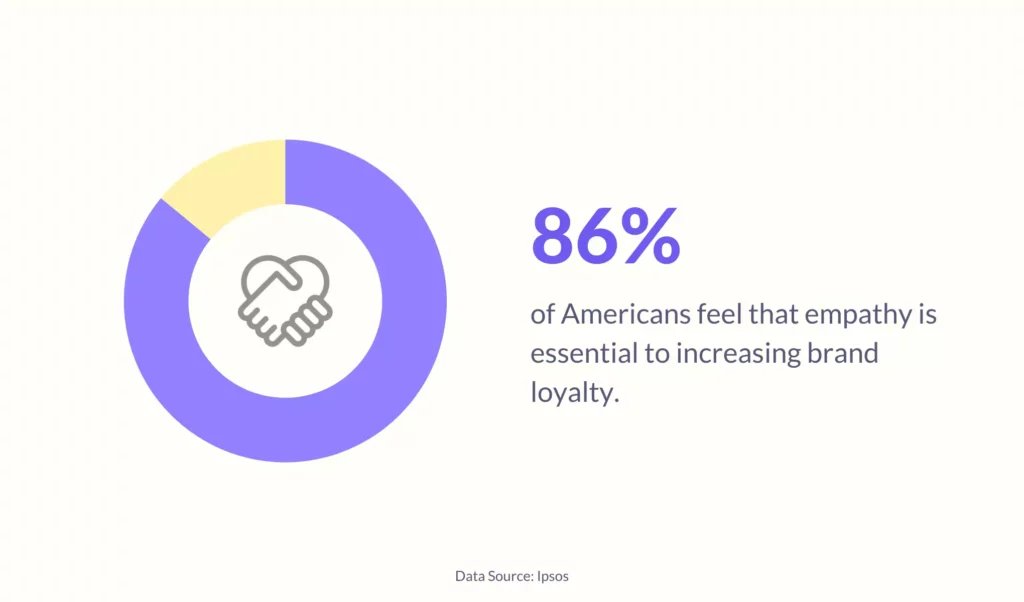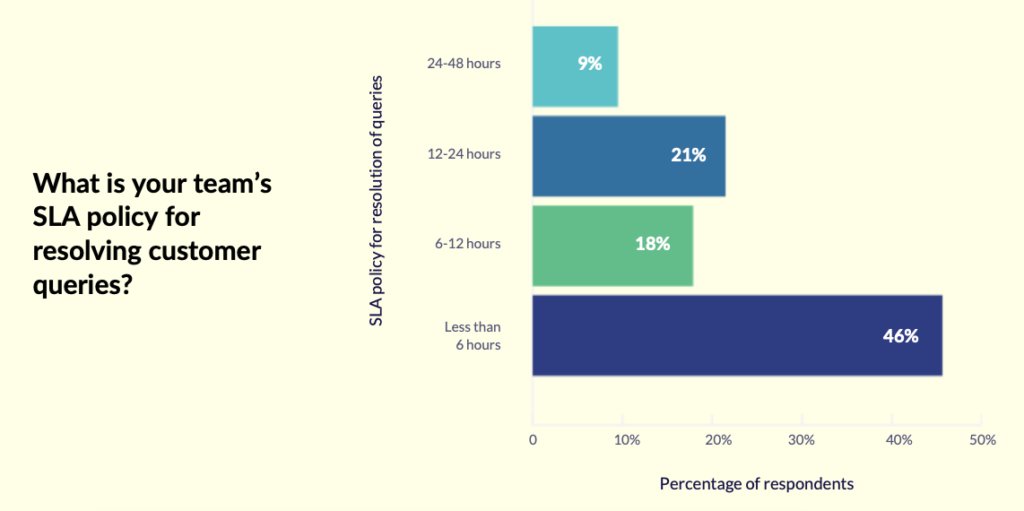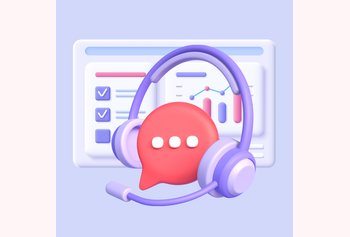Escalation Management: The Key to Handling Customer Service Requests More Effectively

Table of contents
I’m sure you receive many customer emails with queries and support requests, and I’m also sure you leave no stone unturned to address and resolve them.
But not all customers may be satisfied with your service. There may be instances where you mess up or where your customers misunderstand you:
- You may have sent them the wrong order, or it got delayed.
- Maybe your product or service quality didn’t meet their expectations.
So, how do you handle difficult situations like this or one in which they want to take things up with the senior management?
That’s when you need an escalation management process in place. With a process in place, your customer support team will know the exact escalation procedure and handle tricky scenarios.
In this blog, we’ll discuss the escalation management process and the best practices to manage them.
Table of Contents
- What is escalation management?
- Why is escalation management important?
- The best practices in customer escalation management
- 1. Define SLAs for your team
- 2. For each SLA breach, set up corresponding escalation paths
- 3. Do a thorough root cause analysis of the escalated issue
- 4. Train your agents to be empathetic
- 5. Keep your customers in the loop
- 6. Empower your agents with the right tools to manage escalations
- 7. Provide more autonomy to your support staff
- 8. Document escalation cases
- 9. Prioritize escalations based on severity and impact
- 10. Implement a feedback loop
- Escalation Management Metrics: What to Measure and Why
- What are the different types of customer escalations?
- Create positive customer experiences even when things go wrong
What is escalation management?
Escalation management is the process of identifying, categorizing, and solving problems that are not covered or outside of the initial level of support. For example, if a problem is complex, critical, or unresolved after a certain period of time, it is “escalated” to a specialized team with a higher level of authority and more expertise to provide a solution. The goal of escalation management is to ensure minor issues don’t become major problems or result in frustrated customers.
Let’s say a customer reaches out to your support team, saying they can’t log into their account. Following the protocol, the first-level support takes the standard troubleshooting steps, but the issue remains. So, it is escalated to the second-level technical team — those who have more expertise and advanced tools. The team identified that it was because of a backend server issue and solved it. This whole process is called escalation management.
Why is escalation management important?
Customers today demand better service than ever. 8 out of 10 people believe that customer experience needs to improve.

Not every customer service issue can be tackled at first touchpoint. Some issues may require more expertise or authority than the support staff has.
Customers can become frustrated very quickly when they feel their concerns are not taken seriously or being resolved. According to a study conducted by PwC, 32% of customers would quit a brand they loved after a single bad experience.
And just one unresolved matter can quickly spread via word-of-mouth or online reviews to damage a company’s reputation. However, with a proper escalation management process in place you can ensure that issues get resolved professionally and before they escalate to a bigger public relations problem.
Recommended Read:How to Deal With Difficult and Angry Customers (15 Tips and Examples)
The best practices in customer escalation management
Now that we’ve covered the basics of what customer escalations are all about let’s go over some of the best practices you should keep in mind while implementing an escalation process:
1. Define SLAs for your team
Defining internal SLAs is the first step in your escalation management process. These are the rules you will use to decide when an escalation takes place and which steps should be taken after an escalation gets triggered. The internal SLAs that you define will differ, depending on the nature of your business.
- A customer makes five attempts to contact customer support without being assisted.
- Your product or service is not delivered within 24 hours of purchase.
- Customer satisfaction survey score falls below a certain threshold.
2. For each SLA breach, set up corresponding escalation paths
Each time an SLA breach occurs, your customer service software should automatically trigger an escalation path, depending on how you set it up.
Following are examples of possible escalations paths:
- A senior manager reaches out to the customer within two hours of an escalation trigger.
- A senior manager assigns a junior manager to handle the customer request on priority.
- A team member reassigns the support ticket to another team member with greater authority.
It’s important to note that not all escalations are equal in terms of priority or urgency. You need to develop a system that prioritizes your incoming customer escalations. This could be based on how severe the situation is, how urgent it is for you to respond, and how much time you have before the situation turns dire.
A good way to approach this is to create an escalation matrix. It is essentially a flowchart outlining the different steps of escalating and resolving customer requests.
For example, it can help define when an agent needs to pass on a ticket to another department or how long it takes before someone responds. By considering these factors, you can rest assured that employees know exactly what processes they have to follow and how fast they have to work. Everything runs smoothly, and no customer request goes unanswered.
3. Do a thorough root cause analysis of the escalated issue
Escalations can be caused by any number of reasons.
In their rush to rectify an escalated issue, agents often fail to do a thorough analysis of what went wrong in the first place.
How will you ensure that the issue doesn’t happen again without an in-depth look at what caused it?
It’s important to take some time and analyze exactly what went wrong and how it can be avoided in the future. The agent who was originally assigned the request should be an integral part of this process.
You must dig deep into the issue and discover why it happened and what led to it. Was there an error on your end? Or was something wrong with the product itself? Was there an issue with your website? Or was something else entirely stopping customers from using your service? The answers will help you better understand why a customer reached out in the first place and how the issue ended up being escalated.
This way, all relevant stakeholders can discuss why the mistake was made and take steps to avoid repeating it.
The findings of this root cause analysis and the troubleshooting process should be documented and shared with everyone on the team. This step-by-step breakdown is a great way to prevent and resolve common customer issues going forward and make sure they don’t get escalated.
4. Train your agents to be empathetic
It’s not enough for your support agents to know the ins and outs of your product alone. Their ability to handle escalations will go a long way if they have soft skills like empathy and positivity.
In an ideal world, we could all just sit back, relax, and let robots do all the work for us. But customers don’t want to hear that their concerns are being escalated to machines. Humans want to talk to other humans.

When your customers feel that their concerns are being truly heard and understood, they can be more at ease about a difficult situation. It makes them feel like you genuinely care about their problem and helps foster loyalty.
According to a poll conducted by Ipsos, 9 out of 10 Americans believe that brands need to show more empathy. Further, 86% of them say that empathy is critical to creating greater loyalty.

That’s why it’s important to train your agents on how to deal with customers empathetically. Encourage them to use phrases such as “I understand how frustrating that must be”, or “I definitely feel where you’re coming from on that one”. Even such simple phrases can go a long way in easing off tense situations with customers. They can help you establish a strong bond with customers. On the contrary, using cold and aloof tones may push your customers further away.
5. Keep your customers in the loop
When a customer submits a service request, you should always keep them updated about the status of their query. Tell them what your plan is to resolve the issue, and make sure to inform them as soon as it’s taken care of.
This is especially important when dealing with escalated customer queries. If an issue is escalated to you, chances are that the customer has been waiting for quite some time to get an answer to their problem. Now that they have your attention, keeping them in the loop on what’s going on with their query is even more crucial.
Even after you’ve resolved their query, don’t assume everything is fine because your customer hasn’t reached out again. Follow up with your customers to check if everything is okay and if there are any other concerns they might have. This will instill a sense of trust in them and reassure them that they can reach out to you in case they face another problem later on.
6. Empower your agents with the right tools to manage escalations
One of the biggest challenges with managing escalations is keeping track of them, and it’s hard to do so manually. That’s why you need a customer support solution. It can help you streamline workflows and manage escalations in an organized manner. It helps you provide a seamless experience for your customers.
Hiver – the world’s first customer service software designed for Google Workspace – is one such platform that helps you manage escalations effectively.
Hiver lets you respond to customer emails and live chats from within Gmail. It helps you easily categorize high-priority customer requests, set up SLAs for different support processes, automate assigning escalated customer requests to designated agents, and deal with every customer query empathetically and promptly. With Hiver’s analytics, you can even keep track of how many customer requests have been handled as expected and how many have been escalated.
Moreover, at the end of every customer conversation, Hiver even lets you insert a customer satisfaction (CSAT) survey. This lets you gauge how satisfied customers are with how you handled their requests.
7. Provide more autonomy to your support staff
Empower your frontline staff to resolve issues without immediate escalation or much back-and-forth. This can speed up resolution times and enhance customer satisfaction.
For example, a hotel chain could allow its receptionists to offer complimentary services or room upgrades to dissatisfied guests without managerial approval.
ProTip: Set clear guidelines on what issues can be resolved at the frontline level and when escalation is necessary.
8. Document escalation cases
Documentation ensures everyone involved in the escalation process is accountable for their actions. It provides a transparent record of what has been done, making it easier to track responsibilities and follow up on tasks.
Keep detailed records of all escalated cases, including the nature of the issue, steps taken, and final resolution. Use a customer relationship management (CRM) system to log all escalation details and outcomes for future reference.
Imagine a scenario where a large enterprise software provider faces an escalation from a major client due to recurring software bugs affecting their business operations. The escalation begins when the client’s IT team reports the issue to frontline support. The support team logs the issue, noting the severity, the affected systems, and the client’s concerns. As the case is escalated to the technical team, every interaction—from troubleshooting steps to the client’s feedback—is documented in a centralized system.
This detailed documentation allows the technical team to quickly understand the issue’s history, avoid redundant steps, and focus on finding a resolution. Moreover, if the problem resurfaces or if the client has further concerns, the documented history ensures that the team can address the issue efficiently without starting from scratch.
9. Prioritize escalations based on severity and impact
Not all customer issues are of the same severity. So, it’s crucial to prioritize escalations based on their urgency and potential impact on the customer and the business.
This approach helps manage resources effectively, ensure that the most critical issues are addressed first, minimize damage, and maintain customer satisfaction.
Examples of Prioritization:
Critical escalations
A system-wide outage that affects all users. This type of issue demands immediate attention because it impacts many customers and could lead to significant business losses if not resolved quickly.
Action: Escalate to the top-level technical team or IT department, bypassing lower levels of support. Ensure all hands are on deck to resolve the issue quickly.
High-priority escalations
A security breach affects a subset of customers. While it may not be a complete outage, the impact on customer trust and data security makes it a high-priority issue.
Action: Escalate to the security team immediately and inform senior management. Implement mitigation strategies while investigating the root cause.
Medium-Priority Escalations:
A billing error affects multiple customers but does not prevent them from using the service. The issue is necessary but not as urgent as a technical failure.
Action: Escalate to the finance or billing team for correction, ensuring that affected customers are notified of the error and provided with an expected resolution time.
Low-priority escalations:
A single customer requests a minor feature change or reports a non-critical bug. These issues are essential for long-term customer satisfaction but don’t require immediate attention.
Action: Log the issue for future consideration and escalate to the product or development team as part of the regular review process.
ProTip: Use email tags (e.g., critical, high, medium, low) to categorize issues based on their priority and impact. This helps quickly identify which issues need immediate attention.
10. Implement a feedback loop
A feedback loop involves collecting feedback from customers after an escalation has been resolved, analyzing that feedback, and then using the insights gained to improve your processes and prevent similar issues in the future.
It ensures that your support staff is continuously learning and making informed decisions.
For example, a subscription service might send customers a survey after resolving a delivery issue to gauge their satisfaction with the process. They can continuously use this feedback to refine their escalation policies and training programs.
Escalation Management Metrics: What to Measure and Why
Tracking and analyzing metrics is crucial to ensure an effective escalation management process. Using these metrics, you can identify improvement areas, maintain high customer service standards, and make data-driven decisions. Here are some key escalation management metrics to measure and why they matter:
1. Escalation Rate
What to Measure: The percentage of cases or issues escalated out of the total number of cases handled.
Why It Matters: A high escalation rate may indicate that front-line support teams cannot resolve issues effectively, indicating a need for better training, more transparent processes, or improved tools. Conversely, a low escalation rate might suggest that issues are being resolved at the initial level, which is positive but should be monitored to ensure quality isn’t compromised.
Example: If your escalation rate is 20%, 1 in 5 customer issues are being escalated. If this number increases over time, it may be necessary to investigate whether there are specific types of issues that consistently require escalation and address the root cause.
2. Time to Escalate
What to Measure: The average time it takes for an issue to be escalated from when it was first reported.
Why It Matters: Delays in escalating issues can lead to prolonged resolution times, frustrating customers and negatively impacting their experience. Measuring this metric helps ensure that issues are escalated promptly when necessary, reducing the overall time to resolution.
Example: If it takes an average of 2 hours to escalate a critical issue, but customer feedback suggests dissatisfaction with response times, this metric can be used to set targets for faster escalations, particularly for high-priority issues.
3. Resolution Time Post-Escalation
What to Measure: The average time it takes to resolve an issue after it escalates.
Why It Matters: This metric is crucial for understanding the effectiveness of your escalation management process. A long resolution time after escalation could indicate that the issue wasn’t escalated to the right team or that the receiving team lacks the resources or knowledge to resolve the issue faster.
Example: If the average resolution time post-escalation is 24 hours, and customer feedback indicates that this is too long, it may be necessary to provide additional resources or training to the teams handling escalated issues.
Recommended Reading: 7 Effective Escalation Email Templates and Best Practices for Quick Resolutions
4. Customer Satisfaction (CSAT) After Escalation
What to Measure: The customer satisfaction score for cases that have been escalated.
Why It Matters: Escalation management isn’t just about resolving issues—it’s also about ensuring customers are satisfied with the resolution process. Tracking CSAT after escalation provides insight into how well your teams handle escalated cases and whether customers feel their issues are being taken seriously.
Example: If the CSAT score for escalated issues is consistently lower than for non-escalated issues, it may indicate a need to improve communication, speed, or the quality of resolutions for escalated cases.
5. Escalation Outcome Analysis
What to Measure: The outcomes of escalated cases, such as resolved, unresolved, or further escalated.
Why It Matters: Understanding the outcome of escalated cases helps assess the effectiveness of the escalation management process. It can also provide insights into whether issues are escalated appropriately and whether suitable resolutions are implemented.
Example: If a significant number of escalated issues remain unresolved or require further escalation, it may be necessary to review escalation protocols and ensure that cases are directed to the appropriate teams from the start.
6. Repeat Escalation Rate
What to Measure: The percentage of cases escalated more than once.
Why It Matters: Repeated escalations can indicate that issues are not fully resolved or that the initial escalation did not reach the correct team. Measuring this metric helps identify gaps in the escalation process and ensures that issues are thoroughly addressed the first time.
Example: If 10% of escalated cases are being escalated again, it suggests that the issue wasn’t properly addressed initially or the resolution process was inadequate. This might require additional training or adjustments to the escalation process.
What are the different types of customer escalations?
There are typically three types of customer escalations:
Functional escalations
Functional escalation occurs when a support representative cannot resolve a customer’s request within their regular scope of responsibilities. This mostly happens because the request is outside the purview of their expertise.
For example, if a customer calls with a question regarding a payment failure, but the representative they’re speaking with does not have access to the proper information, the agent would escalate the query to someone in the finance team. This would constitute a functional escalation.
Hierarchical escalations
Hierarchical escalation occurs when a customer’s request requires someone at a higher level – like a supervisor or manager – to intervene in order for their issue to be properly addressed.
These escalations are typically necessary when a customer service representative cannot satisfy a customer’s demands due to company policy or other limitations. In these cases, a manager or supervisor may be able to make exceptions or provide additional resources for resolving complex customer issues.
Automatic escalations
These days, several companies set up service level agreements (SLAs) that guarantee the level of service customers can expect from an organization.
According to Hiver’s 2021 Customer Service Benchmark Report, 46% of companies have an SLA of less than 6 hours to resolve customer queries.

This means that customer service agents at those companies are expected to resolve all customer queries in under 6 hours. Failure to do so will result in an automatic escalation.
When an SLA violation occurs, the senior people on the team are automatically notified. Such escalations urge them to take charge and work on resolving the customer’s query as soon as possible because otherwise, it can result in customer dissatisfaction or reputational damage.
Create positive customer experiences even when things go wrong
Escalation management is a vital area of customer service that businesses must prioritize.
Although customer service escalations are unavoidable, handling them effectively can help you cultivate customer loyalty and retention and drive positive feelings toward your organization.
With a little effort and planning, you’ll be able to manage customer escalations in a timely and efficient manner. This can improve your relationship with customers and make their overall experience with your company much more memorable.

































